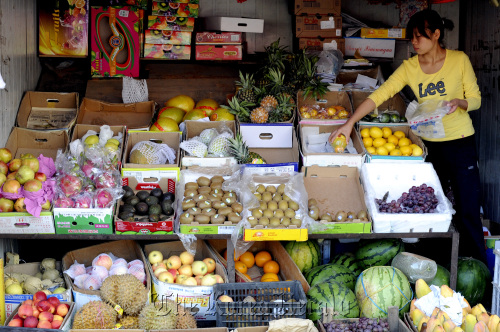China’s economy probably grew more than 9 percent in the third quarter, indicating the nation remains an engine of global growth even as Europe grapples with the sovereign debt crisis and the U.S. recovery falters.
Gross domestic product increased 9.3 percent from a year earlier, according to the median estimate of 22 economists in a Bloomberg News survey. That would be the ninth straight quarter of expansion above 9 percent and follow a 9.5 percent gain in the previous three months. The data are due in Beijing Monday.
Weaker gains in exports and lending in September suggest that Premier Wen Jiabao may need to weigh more measures to support growth after the State Council this month announced aid for small businesses. In Paris, attending a Group of 20 finance ministers’ meeting, Brazil’s Finance Minister Guido Mantega said Oct. 15 that signs of a “slight” slowdown in China, the world’s biggest consumer of commodities, will become a concern if the trend continues.
“The biggest risk China faces in the next 12 months is a global downturn or recession,” Wang Tao, an economist at UBS AG in Hong Kong. While elevated inflation remains a concern, a “more visible” slowdown may lead to policy easing, said Wang, who formerly worked for the International Monetary Fund.
Industrial production rose 13.4 percent in September from a year earlier, according to a Bloomberg survey, compared with a gain of 13.5 percent the previous month and 14.2 percent in the first eight months.
 |
Produce is displayed for sale at a market in Beijing. (Bloomberg) |
Retail sales may have expanded 17 percent from a year earlier, the same pace as in August, and fixed-asset investment excluding rural households may have climbed 24.8 percent in the first nine months after a 25.6 percent gain in the first half of the year, separate surveys showed.
Rio Tinto Plc, the world’s second-largest mining company, expects demand from China, its biggest customer, will be sustained even as growth moderates, Chief Executive Tom Albanese said in an Oct. 11 interview, supporting plans for $27 billion of spending on expansion.
“What we’ve seen over the past five years is that China continues to climb a wall of worry,” Albanese said. “It continues to see concerns, but it grows past those concerns.”
Moderating growth may help tame inflation after five interest-rate increases in the past year and restrictions on home purchases to cool the property market. Consumer-price gains exceeded 6 percent for a fourth month in September, compared with a government target of 4 percent, statistics bureau data showed.
Credit Squeeze
The State Council last week unveiled tax breaks and financial support for small businesses after complaints of a credit squeeze and increased reliance on so-called underground lenders. The announcement followed a visit by Wen to Wenzhou city in eastern Zhejiang province amid reports of surging bankruptcies among private companies.
“This policy move, coupled with earlier measures to ease funding constraints on public housing construction, signals the beginning of targeted policy easing,” said Qu Hongbin, a Hong Kong-based economist with HSBC Holdings Plc. “We don’t expect this to turn into a full-blown easing but it should help mitigate the downside risks to growth.”
In the U.S., elevated unemployment and a collapsed housing market are weighing on demand.
Europe’s revamped strategy to beat its two-year crisis won the backing of global finance chiefs meeting in Paris, who urged the region’s leaders to deal “decisively” with the turmoil when they meet for emergency talks on Oct. 23 in Brussels. The approach includes writing down Greek bonds by as much as 50 percent, establishing a backstop for banks and multiplying the strength of the newly enhanced European Financial Stability Facility, people familiar with the matter said Oct. 14.
Weaker Europe
Weakened demand from Europe contributed to China’s exports growing at the slowest pace in seven months in September, an Oct. 13 report showed. The customs bureau warned of “severe” challenges as the global economic outlook dims and yuan appreciation erodes China’s competitiveness.
The yuan has gained 18 percent against the dollar in the past four years, the most among 25 emerging-market currencies.
M2 money supply grew 13 percent last month, an almost decade low, and new yuan lending was the smallest since December 2009, People’s Bank of China data showed last week. China’s foreign-exchange reserves, the world’s largest, rose the least in more than 10 years in the third quarter.
China’s government bond yields traded at an 11-month low last week and the additional return investors demanded to hold Chinese company debt over government securities surged to a record on concern an economic slowdown at home and a recession in Europe and the U.S. will hurt earnings.
Copper, Iron, Oil
China’s economy expanded 10.4 percent last year. Qu estimates the pace will be 8.9 percent this year and 8.6 percent in 2012.
That growth may help sustain demand for commodities after an index of six metals on the London Metal Exchange dropped 22 percent from the end of July amid a rout that wiped $7.6 trillion off the value of global stocks.
China accounted for all the growth in copper and iron ore demand over the past decade and 90 percent of the increase in global oil consumption, Credit Suisse AG said in an Oct. 4 report.
(Bloomberg)








